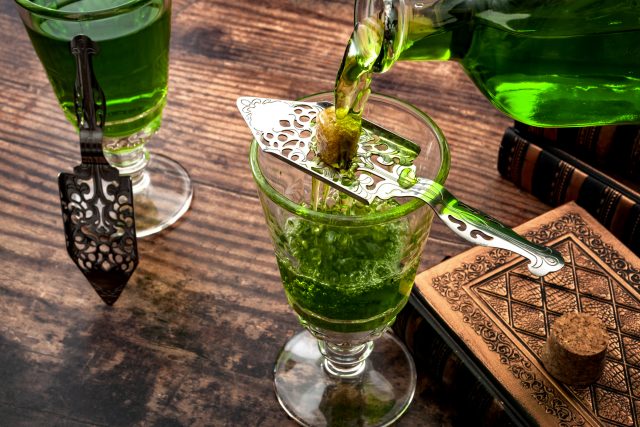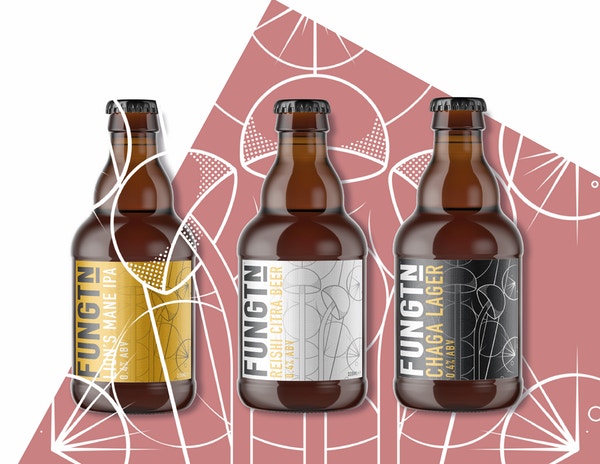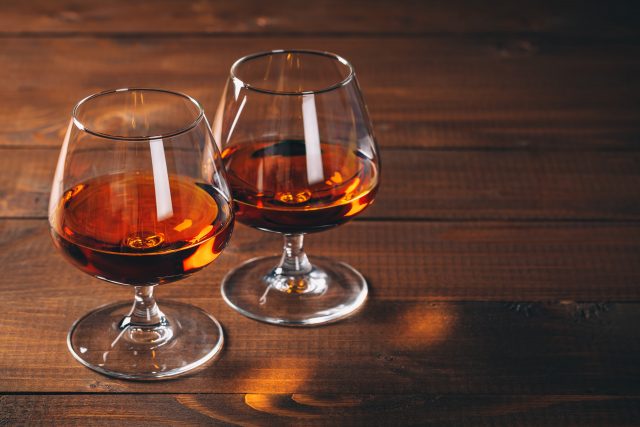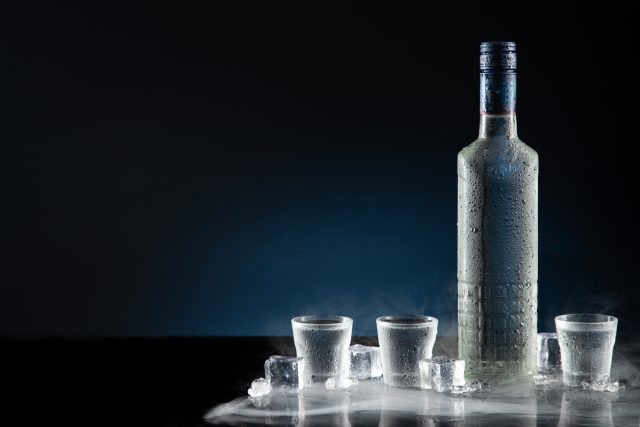8 types of alcohol that have been believed to benefit your health
Last week a fairly grim study was published that, depending on your age bracket, will either fill you with glee or despair.

The global study, published in The Lancet, was funded by the Bill and Melinda Gates Foundation, and the first of its kind to research the risks of drinking alcohol by geographical region, age and sex. Its findings? That drinking any amount of alcohol if you are under 40 poses a risk to health. Men aged between 15-30 were found to be most at risk.
The upside? If you are aged over 40, there are benefits to drinking moderate levels of alcohol (between one and two drinks per day), which included a reduced risk in cardiovascular disease, stroke, and diabetes.
“Our message is simple: young people should not drink, but older people may benefit from drinking small amounts,” says senior author Dr Emmanuela Gakidou, Professor of Health Metrics Sciences at the Institute for Health Metrics and Evaluation (IHME) at the University of Washington’s School of Medicine. “While it may not be realistic to think young adults will abstain from drinking, we do think it’s important to communicate the latest evidence so that everyone can make informed decisions about their health.”
While over 40s may rejoice, feel vindicated in their love of a glass of vino, the fact remains that the majority of the population do (or did) most of their drinking in their early 20s. But at least there’s some comfort in knowing there’s a silver lining once you hit 40, right?
This is only the latest study into the risks of alcohol, which of course shouldn’t be drunk to excess. There are always studies purporting the benefits (and risks) of alcohol, some very contradictory. But it’s not all doom and gloom. There are many commonly held beliefs about the benefits alcohols, and how they can support your overall health and well being (in moderation).
Here are a few of the most popular (and historic) beliefs surrounding the health benefits of certain drinks.
Absinthe – an effective aid to digestion

A visit from the green fairy is a likely sign that you’ve drunk too much – absinthe is not a spirit to be taken lightly. But it is a drink that has a long history of purported health benefits, thanks to the long list of botanicals used in its production, which include wormwood, anise and fennel.
Invented during the French revolution by Dr. Pierre Ordinair, the Swiss-born elixir was particularly popular in the late 19th and early 20th century among Parisian artists and writers like Henri Toulouse-Lautrec, Vincent van Gogh and Pablo Picasso. They believed the drink caused hallucinations that gave them inspiration for their works of art. It was also held in high esteem within medical circles, and was often prescribed for the treatment of everything from epilepsy and kidney stones to headaches and roundworms. We wouldn’t advocate using absinthe for such ailments. But modern science does back up the fact that it can effectively aid digestion. Artemisia absinthium, aka Wormwood, is named after its ability to kill intestinal worms, and is also known to encourage digestion and stimulate the appetite.
No/Low alcohol drinks – could lower cholesterol and boost your immune system

A little sneaky, seeing as the category doesn’t actually contain much, if any, alcohol. But the no/lo category is undeniably one of the healthiest segments of the drinks trade to have blossomed over the past few years. Obviously low alcohol wine, beer and spirits will mean you avoid the adverse affects of any alcohol, and are better for you than full strength booze (assuming the sugar content isn’t off the scale). Some brands, however, are not only alcohol-free, but claim additional health benefits.
Fungtn beer for example is a non-alcoholic beer brewed with medicinal mushrooms (not psychoactive) which are a superfood and can help boost your immune system, lower cholesterol and help fight cancer cells. Lion’s Mane is an increasingly common mushroom used in the world of wellness.
Similarly, Three Spirit is a non-alcoholic range of plant-based ‘spirits’ created by “scientists and bartenders”. Its range of non-alcoholic beverages are made from a combination of maceration, fermentation, distillation, reverse osmosis, freeze-drying and “ultrasonic extraction” to maximise the “functional potency of our drinks”, made from the extracts of active compounds found in plants. That includes exotic ingredients like Lions’ Mane mushroom, Guayusa, passionflower and ashwaganda – which all boast health boosting properties derived from active plant “adaptogens and nootropics”.
Chartreuse – the original elixir for long life

Similar to absinthe, Chartreuse is a liqueur made up of a vast concoction of plants, herbs, roots, leaves, barks (130 to be exact) and a base spirit distilled with honey and sugar syrup, but the specific composition is only known by three monks at any one time. Its conception came about after Francois Hannibal d’Estrees (marshall of artillery for King Henry IV) gave an ancient manuscript entitled An Elixir of Long Life to a Carthusian order of monks in France in 1605. 132 years later, a recipe for the elixir was debuted by the monks, in 1737, which became the first Chartreuse Elixir. Today there’s the original Green Chartreuse, which has an ABV of 55%, and a milder and sweeter Yellow Chartreuse, which comes in at 40% abv.
Back then, it was considered to be a medicinal elixir that could unlock the secrets of a long life. How true is this belief? It comprises many botanicals each with their own purported health benefits, but its most likely benefit is in aiding digestion, as a classic French digestif.
Gin and Tonic – could ward off malaria

There are two aspects of the gin and tonic that could present certain health benefits. Putting to one side the fact that gin itself is a low calorie spirit, it’s also made with juniper (jenever) berries, which have long been known for their health boosting properties. The berries and extracts from the plant have traditionally been used as a diuretic (helping to reduce excess fluids and stimulate the kidneys) and antiseptic, and are believed to help stave off arthritis and diabetes. They’re also prescribed in the treatment of gastrointestinal and autoimmune disorders.
Partner Content
Separately, the classic combo of gin and tonic also has some credibility as a method of treating malaria. The quinine found in tonic can be used to kill the bug that causes malaria (plasmodium falciparum). Quinine can kill the parasite and prevent it from growing. It’s why quinine was dissolved in tonic water to stave off malaria in British tropical colonies, with gin used to mask its bitter flavour – et voila, the gin and tonic was born. Other than this, tonic water has limited nutritional benefits.
Aquavit – the ‘water of life’ that revives the dead

Aquavit is a Scandinavian spirit made from grain or potatoes since the 15th century. It’s essentially a neutral spirit flavoured with herbs and botanicals, the most prominent being caraway seeds (considered a cure for indigestion) and dill, with fennel, coriander, citrus and anise often the supporting act. Its name means ‘water of life’ and that’s certainly what people believed it to be in the Middle Ages. It was believed to help ward off disease and old age, and was often prescribed as medicine during the Black Death period. There are even reports (sketchy as they might be) of people rising from the dead after a glass of aquavit was poured down their throats.
Today, aquavit is still used to help digest rich food. There are many brands of aquavit, but perhaps one of the most interesting is Linie, the oldest aquavit brand in the world, which has retained its unusual maturation method for the past 200 years. The Norwegian trade family, Lysholm, began shipping its aquavit to the East Indies in 1805, but no-one wanted to buy it. It was sailed back to Norway. Arriving in 1807, it was found that the voyage had vastly improved its taste. Ever since, every bottle of Linie has been sailed across the equator, twice, as part of a unique (and highly elaborate) ageing process.
Red wine – good for the heart?

As far back as 460BC, Hippocrates is known to have prescribed wine as a cure for fevers, as an antiseptic and a digestive aid in ancient Greece. Today, the heath benefits and risks of red wine remain the subject of intense debate among scientists. It’s possible to find studies that hail it as a superfood capable of healing all ailments, from fighting cancer, improving balance in the elderly and preventing loss of limbs in those with diabetes. While at the same time counter studies suggest that its health benefits are “a myth”.
The key battle ground is over the benefits of a polyphenol called resveratrol – an antioxidant-rich compound found in red grape skins. It’s thought to have all sorts of health benefits, from slowing the ageing process by promoting tissue firmness, protecting against heart disease and slowing cancer growth.
Consequently, drunk in moderation, red wine is thought to be good for the heart with its antioxidants shown to help prevent coronary artery disease. This is because its antioxidants can increase high-density lipoprotein (HDL’), ‘good cholesterol’, to protect against cholesterol buildup, therefore preventing heart disease. Some research also links resveratrol to a lower risk of inflammation and blood clotting, which can lower the risk of heart disease. It’s mostly good news, and on balance there are more studies suggesting red wine can be beneficial to health than otherwise.
Unfortunately, there are other studies that suggest resveratrol (consumed in the quantities within the limits of moderate drinking) has no benefits in preventing heart disease at all. Typically you’d need 500mg of resveratrol to reap any benefits. A glass of wine contains around 40mg, and so you’d need to drink around 12 glasses a day to consume the right dose. Drinking to this level is obviously not recommended.
Brandy – the grape spirit that can boost your immune system

Brandy has long been used throughout history to treat various ailments. Throughout the mid-19th century it was believed to be good for the heart and for lowering blood pressure, and was also prescribed to ward off pneumonia and the plague due to its antibacterial properties. It’s unlikely that drinking brandy would prevent the plague or treat pneumonia, but there is credibility to the belief that it could be good for treating respiratory problems.
Brandy is rich in antioxidants and polyphenols, which means it can boost your immune system and reduce inflammation. It means it can help to relieve sore throats and coughs, eliminating bacteria and loosening up phlegm and mucus.
Because brandy is made from grapes, it contains some of the same antioxidants as found in wine, which could help lower cholesterol, reduce inflammation in the cardiovascular system and lower blood pressure. There is also evidence to suggest that it can help lower the risk of blood clots, with alcohol in moderate amounts helping to thin the blood. Furthermore, so called ellagic acid and phytonutrients, present in brandy, can help help to prevent the development and metastasis of cancerous cells.
Some also suggest that massaging brandy into your scalp can improve blood circulation and prevent hair loss. We’re a little more sceptical about that one…
Vodka – low calorie, low carb

Yes, vodka is a low calorie option with zero sugar and zero carbs. It’s often touted as the spirit to stick to if you’re watching your weight. It has around 64 calories per 30ml. But gin (74 calories), Tequila (64), whiskey (71) and even some (generally white) rums (65) are also zero sugar, zero carbs, provided they aren’t coloured with caramel or sweetened with additional flavours. The same can be said of flavoured vodkas, which can contain a lot of sugar. It’s often mixers that add calories to your serve. Provided that your spirit is served relatively ‘neat’, then sticking to spirits like vodka can be the lighter option.
While there’s no nutritional value to vodka, it does lay claim to some beneficial attributes. It is a natural disinfectant and antiseptic, good for cleaning wounds, and is also believed to help combat bad breath. It also been suggested by some studies that it can increase blood-flow and circulation in your body which can prevent clots, strokes, and regulate blood pressure.
It goes without saying that excessive consumption cancels out such benefits, and we don’t suggest drinking any hard liquor to excess.
Related news
Castel Group leadership coup escalates
For the twelfth day of Christmas...
Zuccardi Valle de Uco: textured, unique and revolutionary wines




